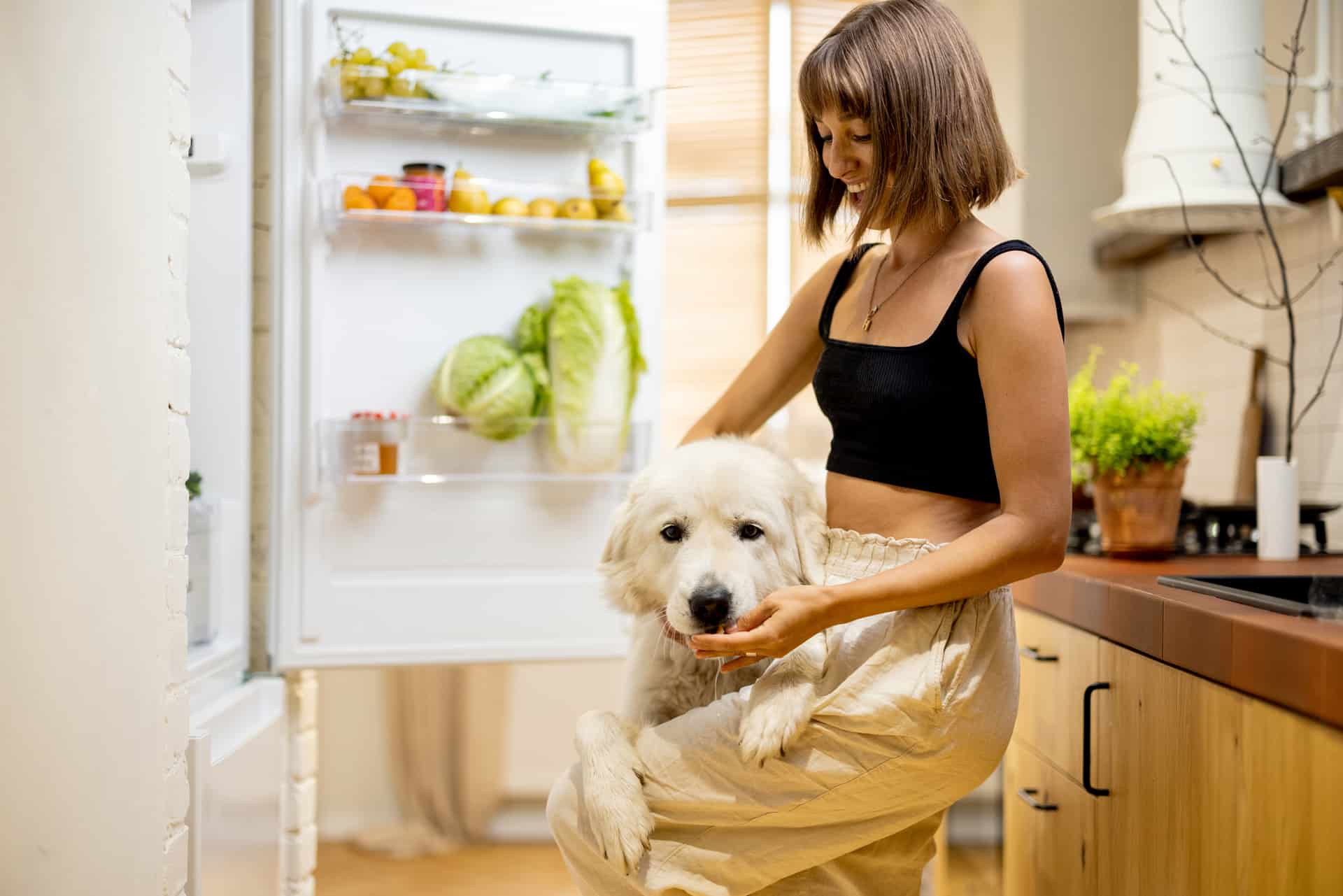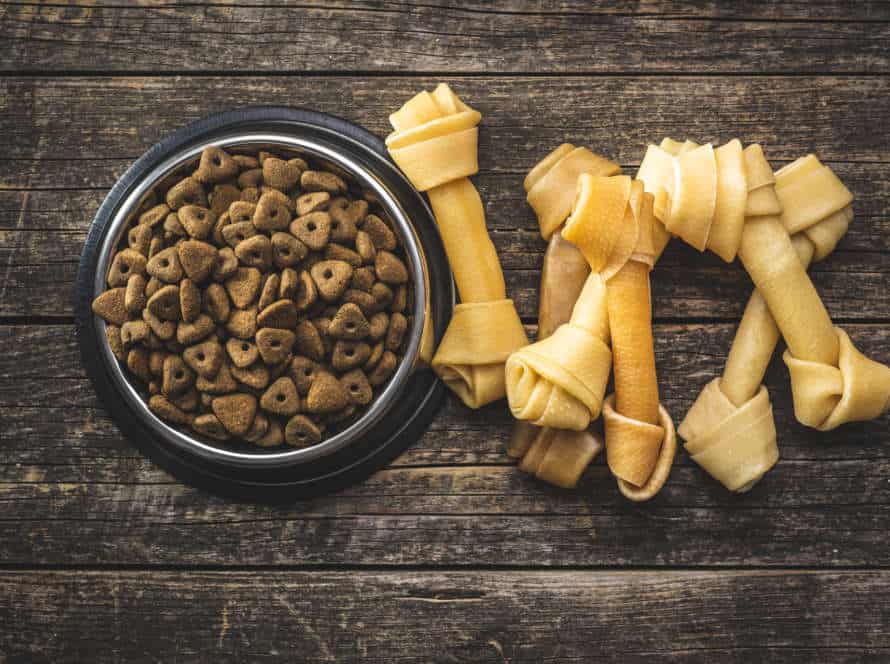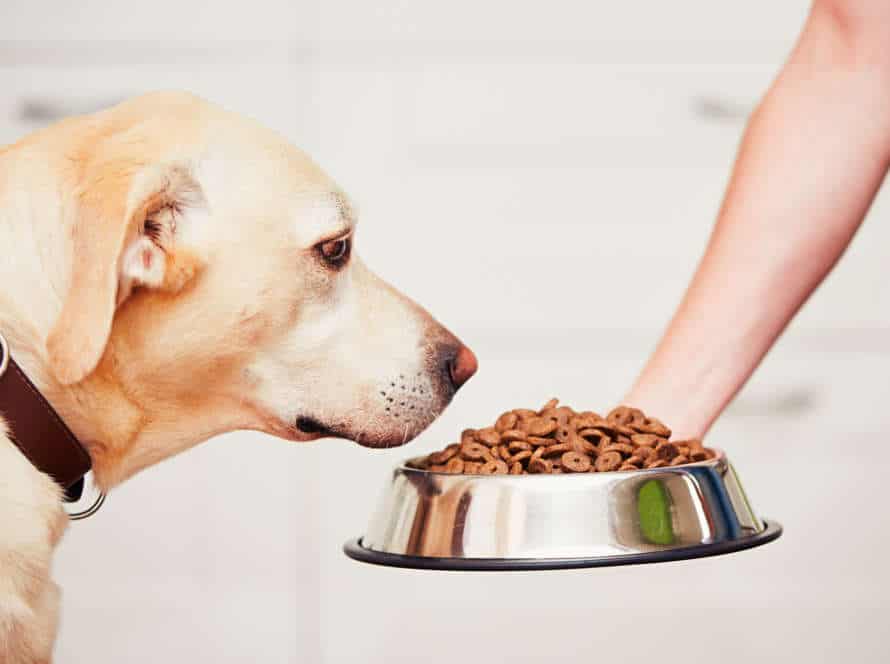Top Tips for Making Your Own Dog Food at Home
Making your own pup food is an ace way to guarantee your furry mate gets a sound and nutritious dish. Here are some top tips to help you out:
- Talk to a vet to figure out your dog’s dietary needs – like the correct amount of protein, fats, and carbohydrates.
- Get high-quality ingredients – like lean meats, fresh veggies, and entire grains.
- Avoid components that are toxic to dogs, such as garlic, onions, and chocolate.
- Cook the ingredients perfectly and mix them properly to guarantee your dog gets a balanced meal.
- Think about making large batches of dog food and freezing them for later.
By following these tips, you can make a healthy and yummy dish for your furry friend that is tailored to their exact dietary needs. Pro tip – If you’re not sure about making dog food at home, try consulting with a veterinary nutritionist for tailored advice.
Determine Your Dog’s Nutritional Needs
Start your own homemade dog food? First, work out what your pup needs. Consider their age, size and activity level. What vitamins, minerals, fats and other components will give them a balanced diet? That’s the key to giving your dog good nutrition.
Breed Specific Nutritional Requirements
Different dog breeds have diverse nutritional needs, based on their size, age, and activity level. It is crucial to know your pup’s nutrition before concocting homemade dog food. Here are some tips:
- Small breeds require a nutrient-dense diet that is higher in fat and protein. They also have smaller tummies, so they need to eat more often.
- Medium and large breeds need a lower-fat, high-fiber diet. This helps with joint issues.
- Senior dogs need a low-protein, low-fat, high-fiber diet. This helps with digestive and weight gain problems.
- Active dogs need a high-protein, high-fat diet to support energy needs. This aids muscle growth and recovery.
Pro Tip: Talk to a vet or canine nutritionist to decide your dog’s particular nutritional needs and create a personalized recipe.
Activity and Age Considerations
Making dog food at home? Consider your pup’s age and activity level. Young dogs need more protein, fat, and calories. Older pooches may need less fat and calories. Active doggos need more fat and calories for energy. Here are some tips:
- Ask vet for specific nutritional needs based on breed, age, and medical conditions.
- Figure out ideal weight and daily calorie intake.
- Consider activity level when deciding protein-to-fat-to-carb ratio.
Pro tip: Include various proteins (beef, chicken, fish) and veggies for essential vitamins and minerals.
Customizing Nutritional Needs to Your Dog’s Health
Every dog has exclusive dietary needs. It’s essential to figure out these needs to feed them correctly. Consider your pup’s age, breed, weight and any health problems that can alter their nutrition needs. Here are the top tips for making homemade dog food:
- Speak to a vet to understand your dog’s needs and what ingredients to use or avoid.
- Balance nutrients by including an assortment of proteins, carbs and fats in the right portions.
- Include veggies and fruits for extra vitamins and minerals.
- Don’t add flavorings, additives or artificial flavors.
- Store the homemade food in airtight containers in the fridge for up to five days or freeze it.
Pro tip: Always check labels and research sourcing of ingredients you use for homemade dog food.
Selecting Ingredients for Dog Food
Pick ingredients with care when making your doggo’s food! Consider their dietary needs. Include proteins, fats, carbs, vitamins, and minerals in the right amounts. Here are some top tips to help you choose the best ingredients for your pup’s homemade meals:
Researching Safe and Healthy Ingredients
Making your own pup chow at home can be a fantastic way to make sure your four-legged companion is getting the best possible nutrition. Research safe and nourishing options that give your pup the nutrients they require to stay healthy! Here’s some top tips to remember when researching and picking ingredients for homemade doggy food:
- Talk to a vet or canine nutritionist to work out your pup’s precise nutritional needs.
- Look for ingredients that provide a balance of protein, healthy fats, and carbohydrates. Examples include chicken, fish, sweet potatoes, and green beans.
- Steer clear of ingredients that are toxic or hazardous to pooches, such as grapes, chocolate, and onions.
- Add supplements, such as fish oil or a multivitamin, to make sure your pup gets all the essential nutrients.
- Introduce new ingredients slowly to prevent upsetting your pup’s tummy.
By following these tips and doing your own digging, you can make a scrumptious and healthy homemade diet for your furry friend!
Identifying Foods Toxic to Dogs
Be a responsible dog owner and be aware of which human foods could be toxic to your pup. Foods to avoid when making homemade dog food: Chocolate, grapes, raisins, onions, garlic, avocado, and xylitol. These can cause vomiting, diarrhea, seizures, anemia, weakness, and even death.
Always check with your vet before changing your pup’s diet. And if you think your pup has consumed something toxic, contact your vet or the ASPCA Animal Poison Control Center without delay.
How to Store and Handle Dog Food Ingredients
It’s important to store and handle dog food ingredients well, to guarantee the quality and safety of your pup’s meals. Here are some tips:
- Read labels carefully and pick only high-quality ingredients. No fillers, preservatives or artificial additives.
- Store dry components, such as grains and kibble, in airtight containers in cool and dry places. This stops moisture and spoilage.
- Put fresh ingredients, like meat, vegetables, and fruits, in separate containers and keep them refrigerated. This stops contamination.
- Before and after handling dog food ingredients, wash your hands, cooking utensils, and storage containers thoroughly. This prevents cross-contamination.
- When making dog food yourself, follow recipes exactly. And check with your vet to make sure your pup’s nutritional needs are met.
These tips will help you make healthy and nutritious dog food at home, and keep your pooch safe and happy.
Balancing Nutrients for Dog Food
Creating homemade dog food? It’s crucial to ensure you balance the correct nutrients in the correct amounts. Each pup is different, so their dietary requirements must be met. But, there are general guidelines to consider when it comes to nutrient balance. Let’s find out what they are!
Macronutrient Ratios for Homemade Dog Food
Ensure your pup’s health and happiness by making their food at home! To avoid any nutrient deficiencies, you’ll need to balance macronutrient ratios. Here are some tips:
- Ask a vet or nutritionist what your pup needs.
- Use lean meats, fish, and eggs as the main ingredient.
- Include carbs like sweet potatoes or brown rice for energy.
- Fats like fish oil or flaxseed oil help with skin/coat health.
- Aim for a 50/25/25 macronutrient ratio – protein/veg & fruit/carbs & fats.
- Adjust portion size as needed. Pro Tip: A balanced vitamin and mineral supplement will help too!
Micronutrient Needs and Supplementing Dog Food Recipes
Dogs need a balanced diet, just like people. Nutrition is key for the overall health of your pup. Micronutrients are super important for supporting their immune system and growth. Knowing what micronutrients they need is essential.
Here are some common ones and their food sources:
- Vitamin A: liver and carrots
- Vitamin B: poultry, fish, and liver
- Vitamin D: fatty fish and egg yolks
- Calcium: milk, cheese, and yogurt
- Iron: red meat and liver
- Zinc: meat, whole grains, and legumes
It might be necessary to supplement their food with extra micronutrients. Ask your vet for advice on dosage and source.
Ensuring Adequate Vitamin and Mineral Intake
Dogs need a balanced diet, with vitamins and minerals for their good health. Here are some tips for homemade dog food to provide your pup with essential nutrients:
- Check with your vet or a canine nutritionist for your pup’s dietary needs based on age, breed, and health.
- Include various proteins like lean meats, fish, and eggs for amino acids.
- Complex carbs like brown rice, sweet potatoes, and quinoa give energy and fiber.
- Healthy fats like olive oil or fish oil make fur and skin healthy, plus vitamins A, D, E, and K.
- Use supplements if needed, like vitamin B12, calcium, and iron. But don’t over-supplement, as it can be toxic.
Pro Tip: Measure ingredients accurately and mix the food well for even nutrition.
By following these tips, you can make sure your pup’s homemade food is healthy.
Making the Dog Food
Preparing your own doggy food? Fabulous! This is an awesome way to ensure your pup’s diet is healthy and nutritional. Plus, it could save you cash in the long-term. If you’re just starting out in the dog-food-making world, here are some top tips to make the process simpler. Check ’em out!
Preparing Homemade Dog Food Safely
Create your own dog food for your fur-pal at home – it’s a great way to make sure they’re eating healthy! Just remember to stay safe when doing so. Here are some tips:
- Ask your vet about your pup’s nutritional needs.
- Pick only high-quality ingredients, and stay away from anything toxic – like chocolate and onions.
- Keep it clean – wash your hands and utensils before and after.
- Cook the food properly – don’t let any bad bacteria in there!
- Store the food safely – use airtight containers in the fridge or freezer.
Follow these tips and your pup can enjoy delicious and safe meals!
Cooking Homemade Dog Food
When cooking homemade dog food, there are a few essential tips to keep in mind.
- Consult a vet or canine nutritionist to determine your pup’s needs.
- Choose high-quality, safe ingredients like meats, veggies, and grains.
- Avoid toxic foods such as chocolate, onions, grapes, and avocados.
- Cook the ingredients thoroughly to kill any harmful bacteria.
- Consider adding supplements like fish oil, probiotics, or joint supplements.
- Store the food in airtight containers in the fridge or freezer.
Following these tips helps your pup get all the nutrition they need.
Meal Planning and Food Portioning
Making your own dog food at home? Meal planning and portioning are musts! Work out your pup’s calorie intake based on age, weight and activity level. Balance the meal plan with proteins, carbohydrates and fats. Here are some top tips:
- Human-grade ingredients for health and safety.
- Include protein sources like meats, fish and eggs.
- Add healthy fats like fish or flaxseed oil.
- Add carbs like rice or sweet potatoes.
- Portion meals based on calorie needs. Adjust as needed.
Follow these tips and plan and portion properly for a nutritious and yummy diet!
Transitioning Your Dog to Homemade Food
Transitioning your furry friend to a homemade diet can be the perfect way to give them nutrient-rich meals that are healthy, good for the wallet, and tailored to their needs. It is an essential process that must be done gradually, to make sure your pup is adapting properly to the homemade diet. With the correct advice and techniques, changing to homemade food can be a breeze!
How to Introduce New Homemade Dog Food to Your Dog
Switching your pup to homemade grub can take some getting used to, but these tips can make the process easier:
- Take it slow – Start by mixing a bit of the homemade food with their usual kibble and slowly increase the proportion of homemade food.
- Monitor their digestion – Keep an eye on bowel movements and health to see if they’re tolerating the new food.
- Make sure it’s balanced – Make sure the homemade food has all the nutrients they need, with protein, carbs, and veggies.
- Try different flavors – Dogs, like us, have their preferences, so experiment with flavors to find out what they like best.
Homemade dog food can be great for those who want to be in control of what their pup eats! Pro Tip: Talk to a vet to tailor a homemade diet for their specific needs.
Monitoring Dog Health and Nutritional Status
When it comes to dog health, transitioning to a homemade diet is a great idea. But, do it right! Here are some tips:
- Consult with a vet to know your pup’s nutritional needs.
- Use human-grade ingredients like proteins, grains and veg.
- Avoid allergens like dairy, wheat and soy.
- Include vitamins and minerals, like calcium and vitamin D.
- Handle and store food safely to avoid contamination.
- Monitor your dog’s weight and adjust portions.
- Keep a food diary to track reactions and adjust recipe.
Pro tip: Start with small batches, so your pup likes it and you don’t waste food.
Adjusting Dog Food Recipes for Optimal Nutritional Balance
Making homemade food for your pet can be a great way to make sure they get quality ingredients. It’s important to adjust recipes for optimal nutrition for your pup. Here are some tips:
- Talk to your vet about your dog’s nutritional needs based on breed, age, activity level, and health.
- Pick high-quality ingredients that provide different nutrients, like lean proteins (chicken, fish), healthy fats (coconut oil, flaxseed oil), and fresh fruits/veggies.
- Find the right proportions of each ingredient to meet your dog’s nutrition needs. A 40% protein, 30% veggie, 30% starch balance is a good start.
- Add vitamins/minerals as needed to make sure your pup has a balanced diet.
By following these tips, you can make sure your dog’s homemade food is nutritious and tailored to their needs.
Frequently Asked Questions
Q: Can I save money by making my own dog food at home?
A: Yes, making your own dog food at home can be more cost-effective than buying pre-made dog food. Plus, you have more control over the quality of ingredients and can customize the food to meet your dog’s specific dietary needs.
Q: What are some key ingredients to include in homemade dog food?
A: Homemade dog food should include a balance of protein, carbohydrates, and healthy fats. Good sources of protein include chicken, turkey, beef, and fish. Carbohydrates can come from brown rice or sweet potatoes. Healthy fats can be found in sources like olive oil or flaxseed oil.
Q: Can I use vegetables and fruits in homemade dog food?
A: Yes, adding vegetables and fruits to homemade dog food can provide your pet with essential vitamins, minerals, and fiber. Some good options include carrots, spinach, apples, and blueberries.
Q: How do I know if my homemade dog food is nutritionally balanced?
A: The best way to ensure that your homemade dog food is nutritionally balanced is to consult with a veterinarian or animal nutritionist. They can help you create a recipe that meets your dog’s specific dietary needs and recommend any necessary supplements.
Q: How do I store homemade dog food?
A: Homemade dog food can be stored in an airtight container in the refrigerator for 3-5 days, or in the freezer for up to 3 months. Be sure to label the container with the date and contents.
Q: Can all dogs eat homemade dog food?
A: Not all dogs are good candidates for homemade dog food. Dogs with specific health issues, such as kidney disease or allergies, may require a special diet prescribed by a veterinarian. Always check with your vet before making any changes to your dog’s diet.







